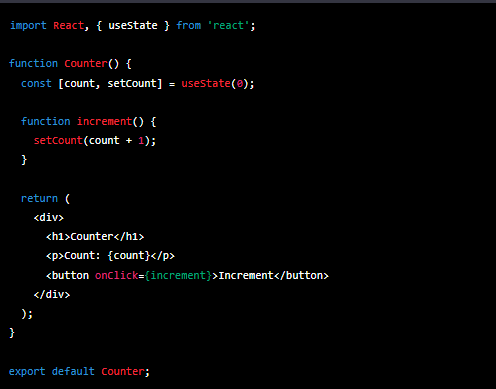Understanding React Hooks vs Classes: A Comprehensive Guide to Help You Decide Which to Use

React Hooks vs Classes: Which One Should You Use?
In the world of React development, a common question arises: React Hooks vs Classes: Which One to Use? React is a popular JavaScript library for building user interfaces. Before React 16.8, classes were the main way to manage state and lifecycle methods. But with hooks, developers now have a choice. In this post, we’ll help you decide between using classes and hooks. For more about the basics of React, check out our Introduction to React page.
Classes in React
Classes have been the traditional way to define components in React. They provide a structured way to handle state and lifecycle methods within a single class. Also, the class syntax is familiar to many developers, especially those with object-oriented programming experience. For tips on using classes, see our React Class Component Tips page.
Example Using Classes

In this example, we create a component called ‘Counter’ using a class. The component has a state variable ‘count’ set to 0. Next, we define an ‘increment’ method to update the count. Finally, we display the current count and a button that calls the increment method when clicked.
React Hooks
React 16.8 introduced hooks as a new way to handle state and lifecycle methods in a simple, functional way. Hooks let you break code into smaller parts, making it easier to read and manage. You can read more about functional components and hooks on our React Functional Components Guide.
Example Using Hooks

Here, we create the same Counter component with hooks. We use the ‘useState’ hook to define the count and an increment function to update it. The code is shorter and doesn’t require a class or constructor.
Pros and Cons
Hooks: Hooks make code simpler and shorter, with less repetitive code. They perform well since they don’t need component instances, and they make code more reusable. Learn more about improving code efficiency in our Code Optimization Techniques article.
Classes: Classes, while traditional, can be lengthy. They are useful for complex components but can be harder to read and test.
When to Use Classes or Hooks
Generally, classes work best for larger, complex components, especially if they need customization or third-party libraries. On the other hand, hooks are ideal for smaller, simpler components or reusable logic. For more on choosing the right approach, visit our Component Design Guide.
Best Practices for Using Hooks
- Keep Hooks at the Top Level
Always use hooks at the top level of a component, not inside loops or nested functions, to prevent issues. For a deeper dive, check out React Hooks Best Practices.
- Use Memoization for Expensive Calculations
If you have calculations that are slow, use the useMemo hook to avoid repeating them and to boost performance.
- Use Context for Global State
If you need to manage global state, useContext offers a shared state accessible by multiple components. This reduces complex code and makes components simpler. Learn more in our React Context Guide.
- Use Custom Hooks for Reusable Logic
If you notice repeated code, create a custom hook. Custom hooks keep your code clean and easy to maintain. For details, see our Creating Custom Hooks in React page.
Conclusion
To sum up, hooks offer a simple way to handle state and lifecycle methods, making code shorter and easier to reuse. For complex needs, classes can still be a good choice. Think about your project’s requirements, team preferences, and component complexity when choosing between hooks and classes. For more on this topic, visit our React Classes vs. Hooks Summary page.